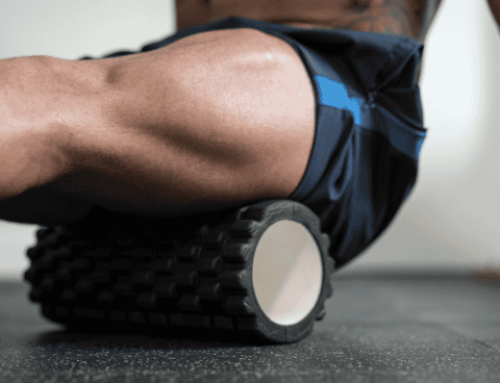Free Weights vs. Machines: Which is the Better Way to Lift Weights?
In the weight room, it’s tempting to take the easy way out and do an exercise—say, the Leg Press—on a seated machine rather than a free weight Barbell Squat or Deadlift. But ultimately, it’s better to get out of your comfort zone and train primarily with free weights.
You can move free weights without restriction in every plane of motion. The most common examples are barbells, dumbbells and kettlebells, but there are other, more unconventional free weights you might find in your gym.
Machines have their uses, of course. They are optimal for rehabbing a lower-body injury that prevents weight-bearing standing free weight movements. They’re also safer when no spotter is available, and can be done with minimal supervision. They’re good for athletes new to a particular free weight exercise, as they assist them with proper form and reduce the chance of injury. They can also break up the monotony of a free weight workout.
RELATED: The Most Overrated Piece of Equipment in the Gym
However, when it comes to maximizing performance, free weights always reign supreme. Here’s why:
Free Weights Require Greater Stability and Control
Your body needs to work to control the weight in three dimensions. This fires critical joint stabilizer muscles and engages core stabilizing muscles. In a machine, you are fixed in one position and work through a fixed range of motion, so there’s no reason for these muscles to be turned on. Dumbbells and kettlebells are even more challenging in this regard, because you can work each side of your body independently.
Free weights are unstable whereas machines are stable. This makes machines great for rehab, but aren’t typically applicable for everyday life, and especially athletics. Sports are inherently unstable, which makes free weights a more appropriate tool for training to become a better athlete, and also to prevent injury.
RELATED: Three Machine Exercises to Avoid
You Can Move Through a Natural Range of Motion
Machines are performed through a fixed range of motion. The idea is to create a safe and easily accessible exercise. Problem is, if your anatomy doesn’t perfectly match up to how the machine was designed, you might run into problems. You might compromise exercise form or put stress on your joints because you’re essentially trying to fit a square peg into a round hole.
On the other hand, free weights allow you to move naturally. Not everyone is built exactly alike, and the ability to move within your optimal range of motion helps to save your joints and creates better movement patterns that carry over to your sport.
Free Weights Produce Greater Strength and Size Gains
Free weight exercises also win out over exercise machines for boosting sports performance size and strength. A 2014 study published in the Journal of Strength & Conditioning Research assessed the Leg Press and Barbell Squat. The researchers found that free weight Barbell Squats generated a superior hormonal response compared to the Leg Press. This creates a superior environment in your muscles for strength and size gains.
RELATED: 6 Gym Machines That Are Actually Worth Your Time
Free Weights Are More Affordable and Versatile
Machines take up a ton of space on the gym floor and are typically extremely expensive. Also, they are typically designed for only one purpose, so the number of exercises you can perform is limited. There are some exceptions to this rule—the cable machine being the most obvious.
Free weights, on the other hand, are incredibly versatile. You could theoretically do an entire workout with just a barbell or a single dumbbell.
References
MacEwan University Sport and Wellness Newsletter (November 2014). “Free Weights versus Machines” by Anna Parrish.
Mayo Foundation for Medical Education and Research. “For Weight Training, Is It Better to Use Free Weights or Machine Weights?” September 23, 2015.
Journal of Strength & Conditioning Research. April 2014 – Vol. 28, Issue 4, pp. 1032-1040. “The Acute Hormonal Response to Free Weight and Machine Weight Resistance Exercise.”
Jim Carpentier, CSCS, is a certified strength and conditioning specialist, New Jersey-licensed massage therapist, and a health/fitness writer. He currently serves as associate health and wellness director at the Greater Morristown YMCA in Cedar Knolls, N.J.
RECOMMENDED FOR YOU
MOST POPULAR
Free Weights vs. Machines: Which is the Better Way to Lift Weights?
In the weight room, it’s tempting to take the easy way out and do an exercise—say, the Leg Press—on a seated machine rather than a free weight Barbell Squat or Deadlift. But ultimately, it’s better to get out of your comfort zone and train primarily with free weights.
You can move free weights without restriction in every plane of motion. The most common examples are barbells, dumbbells and kettlebells, but there are other, more unconventional free weights you might find in your gym.
Machines have their uses, of course. They are optimal for rehabbing a lower-body injury that prevents weight-bearing standing free weight movements. They’re also safer when no spotter is available, and can be done with minimal supervision. They’re good for athletes new to a particular free weight exercise, as they assist them with proper form and reduce the chance of injury. They can also break up the monotony of a free weight workout.
RELATED: The Most Overrated Piece of Equipment in the Gym
However, when it comes to maximizing performance, free weights always reign supreme. Here’s why:
Free Weights Require Greater Stability and Control
Your body needs to work to control the weight in three dimensions. This fires critical joint stabilizer muscles and engages core stabilizing muscles. In a machine, you are fixed in one position and work through a fixed range of motion, so there’s no reason for these muscles to be turned on. Dumbbells and kettlebells are even more challenging in this regard, because you can work each side of your body independently.
Free weights are unstable whereas machines are stable. This makes machines great for rehab, but aren’t typically applicable for everyday life, and especially athletics. Sports are inherently unstable, which makes free weights a more appropriate tool for training to become a better athlete, and also to prevent injury.
RELATED: Three Machine Exercises to Avoid
You Can Move Through a Natural Range of Motion
Machines are performed through a fixed range of motion. The idea is to create a safe and easily accessible exercise. Problem is, if your anatomy doesn’t perfectly match up to how the machine was designed, you might run into problems. You might compromise exercise form or put stress on your joints because you’re essentially trying to fit a square peg into a round hole.
On the other hand, free weights allow you to move naturally. Not everyone is built exactly alike, and the ability to move within your optimal range of motion helps to save your joints and creates better movement patterns that carry over to your sport.
Free Weights Produce Greater Strength and Size Gains
Free weight exercises also win out over exercise machines for boosting sports performance size and strength. A 2014 study published in the Journal of Strength & Conditioning Research assessed the Leg Press and Barbell Squat. The researchers found that free weight Barbell Squats generated a superior hormonal response compared to the Leg Press. This creates a superior environment in your muscles for strength and size gains.
RELATED: 6 Gym Machines That Are Actually Worth Your Time
Free Weights Are More Affordable and Versatile
Machines take up a ton of space on the gym floor and are typically extremely expensive. Also, they are typically designed for only one purpose, so the number of exercises you can perform is limited. There are some exceptions to this rule—the cable machine being the most obvious.
Free weights, on the other hand, are incredibly versatile. You could theoretically do an entire workout with just a barbell or a single dumbbell.
References
MacEwan University Sport and Wellness Newsletter (November 2014). “Free Weights versus Machines” by Anna Parrish.
Mayo Foundation for Medical Education and Research. “For Weight Training, Is It Better to Use Free Weights or Machine Weights?” September 23, 2015.
Journal of Strength & Conditioning Research. April 2014 – Vol. 28, Issue 4, pp. 1032-1040. “The Acute Hormonal Response to Free Weight and Machine Weight Resistance Exercise.”
Jim Carpentier, CSCS, is a certified strength and conditioning specialist, New Jersey-licensed massage therapist, and a health/fitness writer. He currently serves as associate health and wellness director at the Greater Morristown YMCA in Cedar Knolls, N.J.
[cf]skyword_tracking_tag[/cf]













